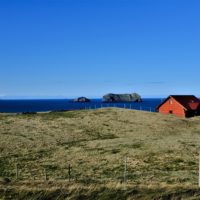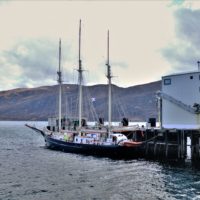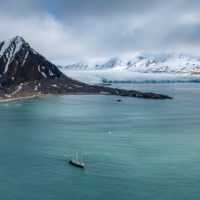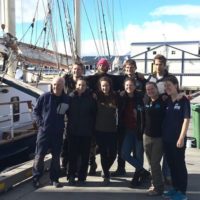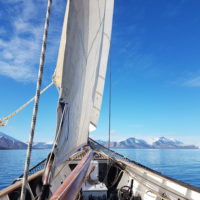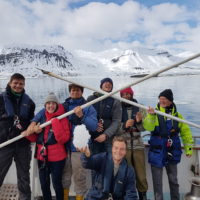Scandinavian Explorer
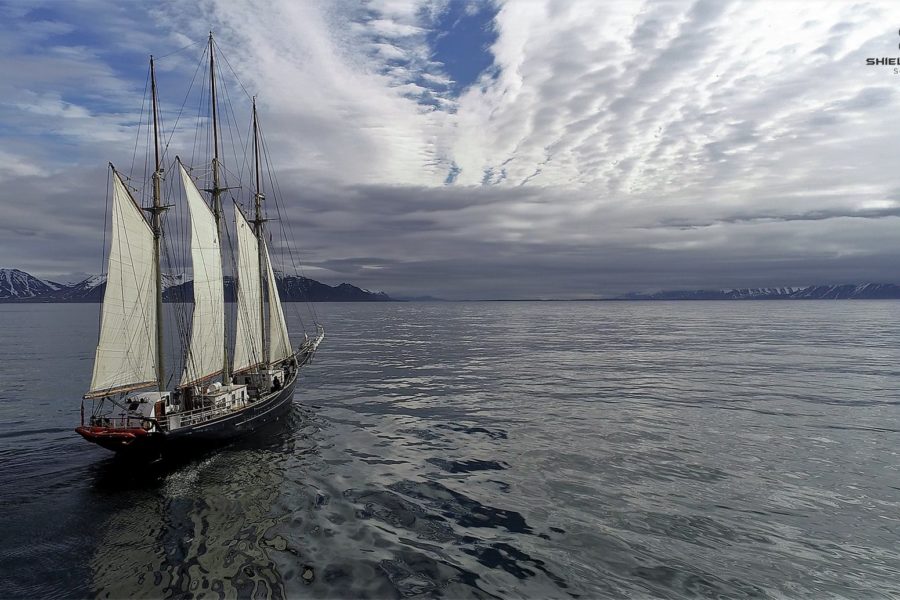
Aarhus, Denmark - Stavanger, Norway
Step aboard Blue Clipper for this Scandinavian adventure. Beginning this adventure in Aarhaus, the second largest city in Denmark and explore some of the best coastal gems Denmark, Sweden and Norway have to offer. Sail the Kattergat and Skagerrak visit coastal towns and cities combined with some offshore tall ship sailing as we make our way to Stavanger.
| Ship | Per Person Twin En-Suite |
|---|---|
| Blue Clipper | £1,120.00 |
| Embarkation | Disembarkation | Nights |
|---|---|---|
| August 4, 2019 | August 17, 2019 | 14 |
Scandinavian Explorer. Aarhus, Denmark - Stavanger, Norway
4th August 2019 - 17th August 2019
Voyage Highlights
- Visiting Danish, Swedish and Norwegian coastal cities and towns
- Cycling around Samsø island (optional excursion)
- Off shore Tall Ship Sailing in the Kattergat and Skagerrak
- Breathtaking Scandinavian Scenery
Life on a sailing voyage
On a sailing voyage we never use the word itinerary, as skippers will always be aiming for the best sailing and shore landings for the forecast and most idyllic or sheltered anchors and ports. They are as keen as you to include some of the highlights describe, but you have to go with Mother Nature, not fight her. The description below is based on what we think might be possible, based on past trips, or experience, but nothing is guaranteed on a sailing voyage. If the following voyage description is not fulfilled for any reason, Maybe Sailing and Maybe Sailing Youth Initiative cannot be held responsible.
Aarhaus
Aarhus, was named by Lonely Planet as one of 10 European destinations you should see. Diverse, modern and fun, Aarhus is one of the happiest cities on Earth. It also was European Capital of Culture 2017. A visit to Aarhus’ art galleries, cosy Latin Quarter or the Old Town will show you just why Aarhus’ residents, and visitors, are so happy…After exploring Aarhus we make the short 20NM passage across to Samso Island.
Samsø Island
Samsø is a Danish island in the Kattegat 15 kilometers off the Jutland Peninsula. Samsø is located in Samsø municipality. The community has 3,724 inhabitants called Samsings and is 114 km² in area. Samsø has been energy-positive for the past decade, producing more energy from wind and biomass than it consumes. Samsø residents can now boast a carbon footprint of negative 12 tonnes per person per year. The island’s vision now is to be fossil fuel-free by 2030. Two years ago the municipality replaced its diesel-powered ferry with one that runs on gas, and the long-term plan is to convert the ferry to run off island-generated biofuel and wind-charged batteries. Other petrol-powered vehicles will also be phased out in favour of electric or biofuel alternatives.
Why not spend the day exploring Samsø by hiring a bike. With its varied scenery, many villages and short distances, the island is perfect for short and long trips on the bike for the whole family. Quiet motor traffic and good, wide bike paths all the way from Tranebjerg on the middle of the island to Nordby in north makes the island a safe place to bicycle. Will the little leg weary, there is always short distance to a comfortable rest in one of Samsøs 22 villages, winding through the landscape, and in many of them you can refresh yourself with a drink in the summer heat.
Halmstad
From Samsø we make the 100nm passage to Halmstad, Sweden. Halmstad is a port, university, industrial and recreational city at the mouth of Nissan in the province of Halland on the Swedish west coast. The municipality of Halmstad is home to many cultural gems. This includes Sweden’s largest gallery and the Mjellby art museum, where the famed Halmstadgruppen’s work is on permanent display. The city also houses works by Milles and Picasso. The Halmstad library has won prestigious architecture awards – it’s considered a great fount of knowledge, as well as a marvellous building. The city also enjoys a thriving music and theatre scene, and people travel from far afield to see shows and concerts.
Halmstad is known as one of Sweden’s most popular tourist destinations. It offers a fine mix of big city pulse and small-town charm, salty shorelines and calm rivers. There’s plenty to entertain outdoor activity seekers, with 11 golf courses and 200 km of cycle paths. It features long stretches of beach, lining the 40 km of coastline, with peaceful inland waterways bordered by the Småland forest. These great natural features make Halmstad an idyllic location for tourists who want the best of two worlds – lush countryside and great beaches.
Gothenburg
Gothenburg (also known as Göteborg) is a chilled, cosmopolitan port on the west coast of Sweden. It’s the country’s second-largest city, and it’s garnered a well-earned reputation for its highly proactive environmental work. Gothenburg can boast a long relationship with the Tall Ships Races – in 2016 it welcomed the fleet for the fifth time since 1968.
The port is nestled within the unique Kattegat – a beautiful body of water that’s shaped by the Jutlandic Peninsula and the Straits of Denmark. You can expect to come across several stunning, 17th-century canals in the city, along with boutique shops, neoclassical and modern art and architecture, and trendy cafes and bars.
The Norwegian Riviera
From Gothenburg we make our way across the Skagerrak to Kristiansand on the South coast of Norway. From here we make our way along the Norwegian coast with so many pretty fishing harbours to visit and coastal landmarks. With Blue Clipper previously making this voyage on the Cruise in Company, the crew will definitely know the best places to stop on route. Also, this coastal region of Norway is great for sailing, so you can really get to grips with sailing Blue Clipper and learning all about sailing and living on board a tall ship.
Kristiansand
Kristiansand is the largest city in Southern Norway. Its old town, Posebyen features traditional wooden houses and in the centre, neo-gothic Kristiansand Cathedral is near the Sorlandets Museum, which displays Norwegian art from 1800 to today. The South-eastern shoreline includes the Bystranda city beach, the 17th century Chrsitiansholm Fortress reotunda and Fiskebrygga quay, lined with fishmongers selling their catch.
Stavanger
There’s a reason this coastal town has been twinned with Houston and Aberdeen: it’s sometimes known as Norway’s ‘Oil City’ for its importance in oil exploration in the North Sea since the 1970s (Norway’s largest oil company, Statoil, is based here). But while much of the outskirts are modern, you won’t find too many skyscrapers – Stavanger’s old centre has some of the most beautiful and best-preserved wooden buildings anywhere in Norway, many dating back to the 18th century. It’s all very pretty, and in summer the waterfront comes alive in the best port-town style.
What is included in the voyage cost:
- All meals on board Blue Clipper – including daily breakfast, lunch and evening meal
- Refreshments throughout the day
- Use of safety equipment
- Accommodation in a twin en suite cabin
- All instruction and lectures on board by fully qualified crew
What is not included:
- Travel to and from the boat
- Personal travel insurance. Check out Top Sail for specialist Tall Ship sailing travel insurance
- Alcoholic and soft drinks
- Any shore excursions and meals on shore (unless otherwise stated)
- VISA fees
Aarhus, Denmark
Stavanger, Norway
Embark Travel Information
Aarhus, Denmark
By air:
Travelling to/from Aarhus airport
The Aarhus airport Tirstrup is located 40 km north of the city and offers direct international flights to Gothenburg, Helsinki, London (Stansted), Oslo and Stockholm. Please visit their website for information on flight arrival/departure times.
There is an airport shuttle bus from Aarhus airport with frequent departures (every 20 minutes after each flight arrival with departures from just outside the main entrance). The fare is about DKK 100 and it takes about 50 minutes to reach downtown Aarhus. The bus stops at the Aarhus University campus (at Nobelparken). Click on link below for more information on airport bus information or call (+45) 8612 8622.
Bus fare can be paid cash (DKK, NOK, SEK, USD, GBP, EUR). The following credit cards are also accepted on the Airport bus: Dankort, VISA, MasterCard or JCB.
There are direct flights between Aarhus Airport/Tirstrup and Copenhagen International Airport with many daily departures on weekdays and some departures on Saturdays and Sundays. The flight takes 35 minutes. In Copenhagen a free transit bus links the International and Domestic airport terminals.
Aarhus airport Tirstrup
Airport bus information
Copenhagen International Airport
Travelling to/from Billund airport
Billund airport is located 100 km south of Arhus and has direct international flight connections to many European destinations, including Barcelona (Girona), Berlin, Birmingham, Brussels, Edinburgh, Faro, Frankfurt, London, Manchester, Milan, Munich, Oslo, Paris, Riga, Rome, and Stavanger. Please visit the airport website for more information on arrivals and departures.
There is an airport shuttle bus between Aarhus and Billund airport with several daily departures – please click airport link down below to find more information. The travel time from Billund Airport to downtown Aarhus is approximately 1 hour and 30 minutes. Tickets are sold on the bus for about 140 DKK. The following credit cards are also accepted on the Airport bus: Dankort, VISA, MasterCard, Visa Electron, V Pay, China Union Pay, American Express or JCB.
Travelling to/from Copenhagen airport
Please visit the website for more information on arrivals and departures by plane. For connecting trains to Aarhus, please click DSB-link down below . Copenhagen airport is connected to Aarhus Airport/Tirstrup with many daily departures on weekdays and some departures on Saturdays and Sundays. The flight takes 35 minutes. In Copenhagen a free transit bus links the International and Domestic airport terminals. Copenhagen airport has direct flight connections to a large number of international destinations.
Copenhagen airport
DSB
Aarhus airport Tirstrup
By train:
Aarhus lies at one of the most important railway junctions in Denmark. There are hourly departures to the north, south and west. From Southern and Central Europe, the connections are via Hamburg/Flensburg. Travel time from Hamburg to Aarhus is approximately five hours. From Eastern European countries train connections to Aarhus go via Poland and Copenhagen. Aarhus has hourly services to and from Copenhagen. The opening of the Tunnel under the Great Belt has shortened the journey by one hour, so now the trip takes three and a half hours. There are several daily connections to Sweden, Germany and the rest of Europe.
Please visit DSB or DSB Journey planner to find all your connection route options.
Trains bound for Aarhus railway station leave Copenhagen Airport hourly. The price is about DKK 410 for a one-way ticket (including seat reservation). To buy a ticket at the Copenhagen airport, you should go to the DSB Ticket Sales booth in Terminal 3 just above a rolling sidewalk which takes you down to the train.
Disembark Travel Information
Stavanger, Norway
How to get to Stavanger, Norway
By Air
Stavanger international airport, Sola, with its more than 60 destinations makes it easy to go by plane to and from the region.
By Train
Regional trains from Oslo and Kristiansand to Stavanger are an economical and comfortable way of travelling, where you at the same time enjoy fantastic natural landscapes such as forests, mountains and the open landscapes of Jæren. NSB takes you all the way into the centre of Stavanger.
By Car and Ferry
E39 takes you efficiently to the region. If you arrive by car from other countries in Europe, you can go by car ferry from Denmark to Kristiansand, or by car ferry from Denmark to Risavika, near Stavanger. Colorline and Fjordline operate these ferry connections.
By Bus and coach
Bus routes such as Haukeliekspressen (Oslo-Haukeli-Haugesund), Sør-Vest ekspressen (Kristiansand-Eigersund-Stavanger) and Kystbussen (Bergen – Haugesund – Stavanger) take you from the region from the north, south and east. Locally there are buses in the entire region organised by Kolumbus, Suldal Billag and Boreal Transport.
